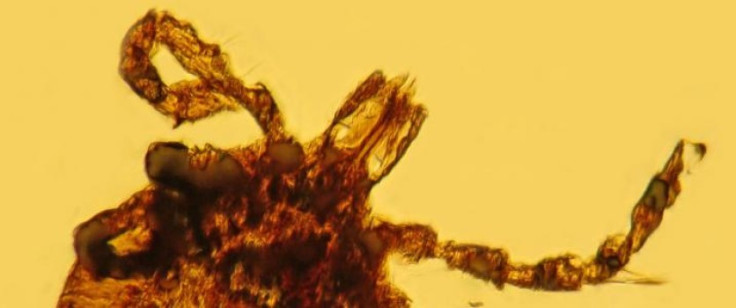Lyme Disease Bacteria Has Been Around For 15 Million Years, Says Jurassic Park Scientist

The scientist behind the idea for Jurassic Park has found proof that Lyme disease actually predates the entire human race.
Dr George Poinar Jr, a professor emeritus in the Department of Integrative Biology of the Oregon State University (OSU) College of Science, studied a 15-20 million-year-old piece of amber from the Dominican Republic.
Poinar is one of the world's leading experts on plant and animal life forms found preserved in amber, and it is he who popularised the idea of extracting DNA from insects in amber, which was adapted by Michael Crichton for the Jurassic Park book and films.
In the amber, he found the oldest ever fossilised evidence of ticks carrying Borrelia, a type of spirochete-like bacteria that causes Lyme disease.
The study, entitled "Spirochete-like cells in a Dominican amber Ambylomma tick (Arachnida: Ixodidae)" is published in the journal Historical Biology.
Beware of the ticks
Lyme disease is a bacterial infection that is spread to humans by ticks found in woodland and heath areas, causing a rash, flu-like symptoms and eventually problems with joints, the heart and the central nervous system.
Ticks feed on the blood of small mammals, and rising deer populations in some parts of North America, such as Nova Scotia in Canada, have seen cases of Lyme disease triple in 2013 from the year before.
In the UK, Public Health England estimates that there are 2,000-3,000 cases of Lyme disease a year and there are eight areas in the UK with a high population of ticks.
"Ticks and the bacteria they carry are very opportunistic. They are very efficient at maintaining populations of microbes in their tissues, and can infect mammals, birds, reptiles and other animals," said Poinar.
"In the United States, Europe and Asia, ticks are a more important insect vector of disease than mosquitos. They can carry bacteria that cause a wide range of diseases, affect many different animal species, and often are not even understood or recognised by doctors.
"It's likely that many ailments in human history for which doctors had no explanation have been caused by tick-borne disease."
Ancient bacteria

Bacteria are an ancient group of species that is nearly as old as the planet Earth, having been around for almost 3.6 billion years.
Poinar has been studying diseases revealed in the fossil record for 30 years and says that humans have probably been getting diseases from tick-borne bacteria, such as Lyme disease, since humans began to exist.
A 5,300-year-old mummy found in a glacier in the Italian Alps, known as Ötzi, the Tyrolean Iceman, is the oldest known example of a human carrying the Borrelia bacteria.
Despite being an active man when he was alive, his preserved tissues indicate that he had several health problems, one of which could have been Lyme disease.
© Copyright IBTimes 2024. All rights reserved.






